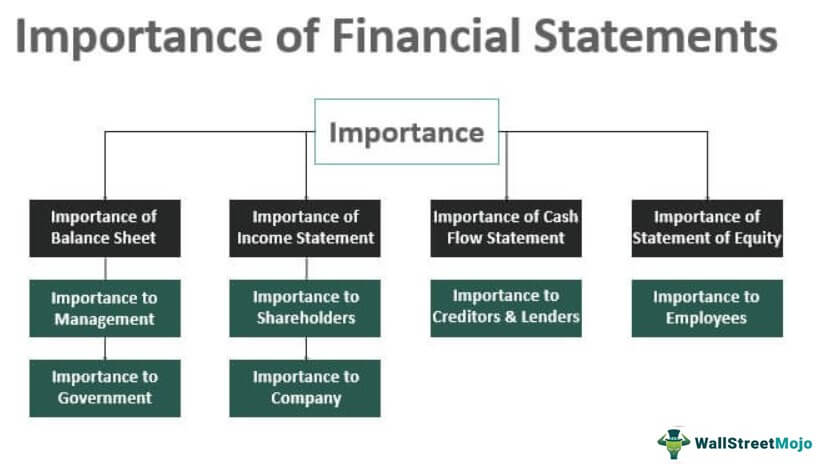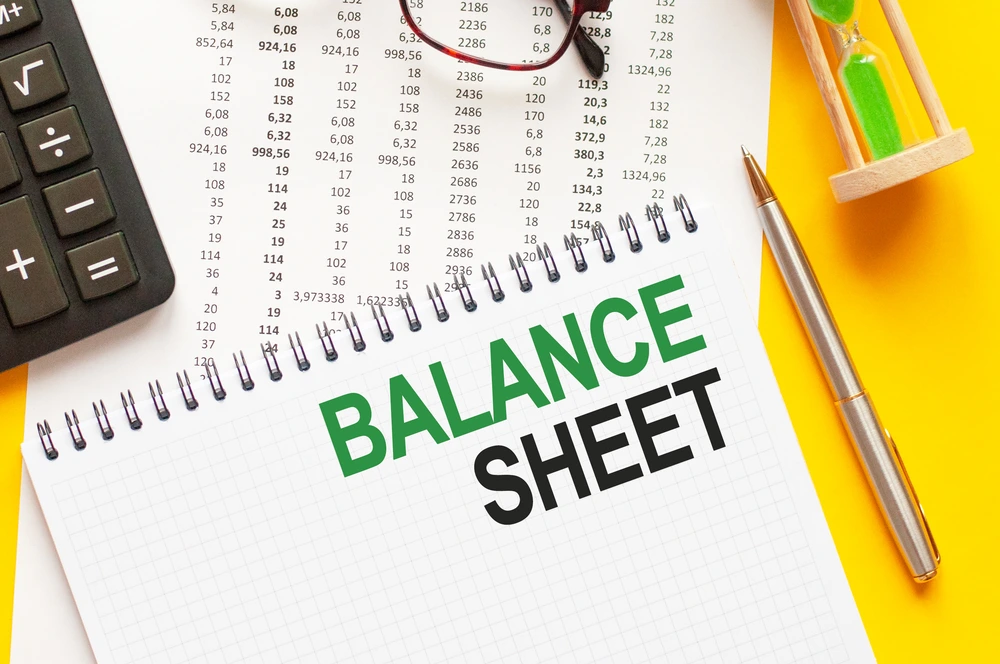Mastering Financial Statements: A Comprehensive Guide for Small Business Owners"

Financial statements are essential tools for small business owners to understand their company’s financial health, make informed decisions, and attract potential investors or lenders. This comprehensive guide will help you master the key financial statements: the income statement, balance sheet, cash flow statement, and statement of changes in equity.
The Importance of Financial Statements

Financial statements are essential tools for small business owners to understand their company’s financial health, make informed decisions, and attract potential investors or lenders. This comprehensive guide will help you master the key financial statements: the income statement, balance sheet, cash flow statement, and statement of changes in equity.
Overview: Financial Statements provides a snapshot of a company’s financial health at a specific point in time.
Decision Making: They help small business owners make informed decisions regarding investments, expansion, borrowing and more.
External Stakeholders: Financial Statements are also crucial for external stakeholders such as investors, lenders and venders to access the business viability and credit worthiness.
Types of Financial Statements

- Balance sheets
- Income statements
- Cash flow statements
1) Balance Sheets:

A balance sheet is a financial statement that provides a snapshot of a company’s financial position at a specific point in time. It is a Statement of the financial position of an individual or enterprise ata given dae, which exhibits its assets, liabilities, capital, reserves and other account balances at their respective book values. It outlines the company’s assets, liabilities, and shareholders’ equity, following the fundamental accounting equation:
Assets=Liabilities+Equity
| Assets | Liabilities and Equity | ||
|---|---|---|---|
| Current Assets | $200,000 | Current Liabilities | $80,000 |
| Cash and Cash Equivalents | $50,000 | Accounts Payable | $50,000 |
| Accounts Receivable | $70,000 | Short-Term Debt | $20,000 |
| Inventory | $60,000 | Accrued Expenses | $10,000 |
| Prepaid Expenses | $20,000 | Total Current Liabilities | $80,000 |
| Total Current Assets | $200,000 | ||
| Non-Current Liabilities | |||
| Non-Current Assets | $300,000 | Long-Term Debt | $150,000 |
| Property, Plant, and Equipment (PP&E) | $200,000 | Deferred Tax Liabilities | $20,000 |
| Intangible Assets | $50,000 | Pension Liabilities | $30,000 |
| Long-Term Investments | $50,000 | Total Non-Current Liabilities | $200,000 |
| Total Non-Current Assets | $300,000 | ||
| Total Liabilities | $280,000 | ||
| Total Assets | $500,000 | ||
| Equity | |||
| Common Stock | $100,000 | ||
| Retained Earnings | $120,000 | ||
| Additional Paid-In Capital | $0 | ||
| Total Shareholders’ Equity | $220,000 | ||
| Total Liabilities and Equity | $500,000 |
This balance sheet shows a company with total assets of $500,000, financed by $280,000 in liabilities and $220,000 in equity.
2) Income Statements:

An income statement, also known as a profit and loss statement, is a financial document that summarizes a company’s revenues, expenses, and profits or losses over a specific period, such as a quarter or a fiscal year. It provides an overview of the company’s financial performance by showing how revenues are transformed into net income. The primary components of an income statement include revenues (sales), cost of goods sold (COGS), gross profit, operating expenses, operating income, other income and expenses, and net income. Revenues represent the total amount of money earned from sales of goods or services.
Sample Income Statement Structure
| Description | Amount |
|---|
| Revenue | $500,000 |
| Cost of Goods Sold (COGS) | $200,000 |
| Gross Profit | $300,000 |
| Operating Expenses |
| Salaries and Wages | $100,000 |
| Rent | $30,000 |
| Utilities | $10,000 |
| Marketing | $20,000 |
| Depreciation | $10,000 |
| Total Operating Expenses | $170,000 |
| Operating Income | $130,000 |
| Other Income and Expenses |
| Interest Income | $5,000 |
| Interest Expense | $10,000 |
| Gain on Sale of Assets | $2,000 |
| Total Other Income and Expenses | -$3,000 |
| Earnings Before Tax (EBT) | $127,000 |
| Income Tax Expense | $25,000 |
| Net Income | $102,000 |
3) Cash Flow Statements:

A cash flow statement tracks the inflow and outflow of cash, providing insights into a company’s financial health and operational efficiency. The CFS highlights a company’s cash management, including how well it generates cash. Cash flow statements are one of the three fundamental financial statements financial leaders use. Along with income statements and balance sheets, cash flow statements provide crucial financial data that informs organizational decision-making. While all three are important to assessing a company’s finances, some business leaders might argue that cash flow statements are the most important.
Sample Cash Flow Statement Structure
| Description | Amount |
|---|
| Cash Flows from Operating Activities |
| Net Income | $120,000 |
| Adjustments for Non-Cash Items: |
| Depreciation | $20,000 |
| Amortization | $5,000 |
| Changes in Working Capital: |
| Increase in Accounts Receivable | ($10,000) |
| Decrease in Inventory | $5,000 |
| Increase in Accounts Payable | $7,000 |
| Cash Generated from Operations | $147,000 |
| Interest Paid | ($8,000) |
| Income Taxes Paid | ($25,000) |
| Net Cash Provided by Operating Activities | $114,000 |
| Cash Flows from Investing Activities |
| Purchase of Property, Plant, and Equipment | ($50,000) |
| Proceeds from Sale of Equipment | $10,000 |
| Purchase of Investment Securities | ($20,000) |
| Net Cash Used in Investing Activities | ($60,000) |
| Cash Flows from Financing Activities |
| Proceeds from Issuing Debt | $30,000 |
| Repayment of Debt | ($20,000) |
| Proceeds from Issuing Equity | $50,000 |
| Dividends Paid | ($15,000) |
| Net Cash Provided by Financing Activities | $45,000 |
| Net Increase in Cash and Cash Equivalents | $99,000 |
| Cash and Cash Equivalents at Beginning of Year | $150,000 |
| Cash and Cash Equivalents at End of Year | $249,000 |
How to prepare financial statements
The process of preparing financial statements begins with collecting all your financial details and organizing them into official documents. Once polished and finalized, they’re shared with key stakeholders, such as management, investors, and creditors, who use them to assess the company’s performance, cash flow, and financial health. Use the following steps to guide you through the process.
1) Gather Financial Information
Collect all necessary financial data, including:
- Revenue and sales records
- Expense receipts and invoices
- Bank statements
- Payroll records
- Previous period financial statements
2) Prepare the Trial Balance
A trial balance is a list of all the general ledger accounts (both revenue and expense) and their balances at a certain point in time. Ensure that the total debits equal total credits.
3) Adjusting Entries
Make necessary adjusting entries for:
- Accrued revenues and expenses
- Depreciation
- Prepaid expenses
- Inventory adjustments
4) Prepare the Adjusted Trial Balance
After adjusting entries, prepare an adjusted trial balance to ensure that total debits still equal total credits.
5) Categorize and organize the data
Once your financial data is gathered, it’s time to sort and file. Break down the data into categories such as revenue, expenses, assets, and liabilities.
A well-organized data set streamlines the drafting process, helping you meet reporting deadlines and maintain compliance with regulatory requirements. This step ensures you’re speaking the language of accounting standards, which is crucial for keeping stakeholders’ trust and avoiding legal issues.
How to prepare a cash flow statement
The statement divides cash flow into three types: cash flow from operations, cash flow from investing, and cash flow from financing.
1) Find your starting cash balance
To find the starting cash balance when preparing a cash flow statement, you’ll need to refer to the cash balance at the beginning of the period, which can typically be found on the prior period’s balance sheet.
That said, knowing cash flows isn’t very useful unless you’re determining an ending balance; for that, you need your starting cash balance. You’ll find it at the end of your previous cash flow statement.
2) Calculate cash flow from operating activities
To calculate cash flow from operating activities, you need to adjust the net income by accounting for changes in working capital and adding back non-cash expenses and also you’ll have to choose between the direct and indirect methods.
The indirect method is a lot easier than the direct method. You begin with the net income reported on the income statement. Then, you add non-cash expenses (like depreciation and amortization) and subtract non-cash revenues (like gains on the sale of assets). Finally, you consider changes in balance sheet accounts (accounts receivable, accounts payable, and inventory).
3) Calculate cash flow from investing activities
Add up cash received from the sale of long-term assets, the sale of investments, and loans received from others.
Then, determine outflows by adding up cash paid for the purchase of long-term assets, purchase of investments, and loans made to others.
Subtract the total cash outflows from the total cash inflows, and you’ll have your cash flow from investing activities.
Conclusion
Financial statements are critical for driving the insights needed to make intelligent, data-driven decisions that benefit the business. Following the steps listed above is a quick and easy way to start properly preparing effective financial statements.
While financial statements can be created manually, the right accounting software can make it much easier to pinpoint the data you need and build financial statements from the ground up. They provide the necessary information for stakeholders to make informed decisions, ensuring the company’s sustainability and growth. Accurate preparation and analysis of financial statements are fundamental to effective financial management and strategic planning.
FAQ's of financial statements
Financial statements are written records that reflect the business activities and financial performance of a company over a particular time period (often monthly, quarterly, annually, or biannually). There are three types of financial statements: income statements, balance sheets, and cash flow statements. Let’s break them down below.
Financial statements are important because they give a clear picture of how well a company is doing financially at a particular point in time. They are essential for determining profitability and guiding decision-making.
Through financial statements, companies can identify trends, manage risks, and allocate resources more effectively, making it possible for them to maintain stability and achieve long-term growth. Plus, they serve as a valuable tool for investors and lenders by helping them determine whether to invest in or lend to a business.
- Assets: Resources owned by the company that provide future economic benefits (e.g., cash, inventory, property).
- Liabilities: Obligations the company needs to pay in the future (e.g., loans, accounts payable).
- Equity: The residual interest in the assets of the company after deducting liabilities (e.g., owner’s equity, retained earnings).
- Current assets/liabilities: Items expected to be used or settled within one year (e.g., cash, accounts receivable, accounts payable).
- Non-current assets/liabilities: Items expected to be used or settled over a period l
Errors in financial statements should be corrected promptly through journal entries, and if necessary, restate the financial statements of previous periods to reflect the corrections.



